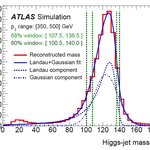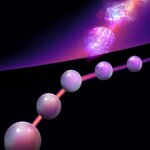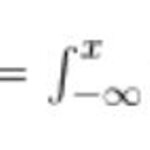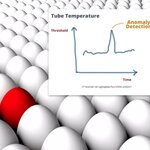Physics

Particle physicists call "jet" the combined effect of many particles produced together when an energetic quark or gluon is kicked out of the hadron it called home, or when it is produced out of the blue by the decay of a massive particle. The clearest example of the first process are the collisions we routinely produce at the Large Hadron Collider, where pairs of protons traveling at close to the speed of light bang into each other head-on. Protons are like bags of garbage: they contain a complex mix of quarks and gluons. So what happens in the collision is that one individual quark or…

I am reading a fun paper today, while traveling back home. I spent the past three days at CERN to follow a workshop on machine learning, where I also presented the Anomaly Detection algorithm I have been working on in the past few weeks (and about which I blogged here and here). This evening, I needed a work assignment to make my travel time productive, so why not reading some cool new research and blog about it? What is more, my flight is being delayed and I am stuck in the gold Air France lounge in Geneva, poor me - so the Tawny port they serve there is a very good lubricant for my sticky…

The concept of quasiparticles was coined by Nobel laureate Lev Davidovich Landau, who used it to describe collective states of lots of particles or rather their interactions due to electrical or magnetic forces. Due to this interaction, several particles act like one single one.
The assumption has been that quasiparticles in interacting quantum systems decay after a certain time but the opposite is the case, according to a recent paper: strong interactions can even stop decay entirely. Collective lattice vibrations in crystals, so-called phonons, are one example of such quasiparticles.
The…
General Relativity (GR) is 100 years old and today. Many writings will try to simplify it using illustrations with sheets and bowling balls and such. If you want to have a more precise idea of what it really is and you know a bit of algebra this article is for you. Here is what GR is in simple but still mathematical terms understandable to all who know high school algebra.
We will start with the Pythagorean theorem. Then add to it until we get to the formula that gives us the big bang theory. Then relate that to gravity.
Pythagorean Theorem.
In…

I know, the title of this article will not have you jump on your chair. Most probably, if you are reading these lines you are either terribly bored and in search of anything that can shake you from that state - but let me assure you that will not happen - or you are a freaking enthusiast of heavy flavour physics. In the latter case, you also probably do not need to read further. So why am I writing on anyway? Because I think physics is phun, and rare decays of heavy flavoured hadrons are interesting in their own right.Still here? Okay, then let me qualify the above statement. Heavy flavoured…

And there it starts. At a very important juncture for fundamental science, physicists are gathering in Granada this week as part of a multi-pronged program that will lead to agreeing on what are the priorities for particle physics in Europe. Given that particle physics is a global, collaborative endeavour nowadays, with experiments typically composed by thousands of physicists from all around the world, we can be sure that what will be agreed is going to shape the future years of this experimental discipline, as not only European projects are discussed, but more in general all projects…

A few weeks ago I posted here an idea of how one could design an algorithm that looks for new physics processes in Large Hadron Collider data, without giving the algorithm any knowledge whatsoever of how those new physics processes should behave.
The idea of using anomaly detection tools for new physics searches is by no means new. Indeed, while we have a pretty good hunch of how to look for Supersymmetry or Hidden Valleys or Colorons or whatchamacallits - all but one of the named things are new physics theories - we are also ready to admit that new physical phenomena that are not predicted…

Experimental particle physics, the field of research I have been involved in since my infancy as a scientist, consists of folks like you and me, who are enthusiastic about constructing new experiments and testing our understanding of Nature. Some spend their life materially designing and building the apparata, others are more attracted by torturing the data until they speak.
To be precise, data analysts can be divided further into two classes, as I was once taught by my friend Paolo Giromini (a colleague in the late CDF experiment, about whose chase for new physics I have written in my…

A simple slice of life as an academic. No chair was assigned for the session Z13 in which my theoretical research was presented along with great work in varying fields but with related themes. Waves, and/or fluids connected all that was discussed. The research I found most interesting was not my own. My peers in the session elected me to the honored position since none was assigned. Likely because APS trusted us not to act in appropriately. Many other sessions which presented research did not have chairs. Other than calling time on…

Theoretical physicist have no more than five good unique insights in a lifetime. Then spend years chasing down the implications of those insights. May computers at least help with if not supplant us in this effort? Maybe, maybe not. I Went
to talk, did a lot of good listening, and served as a sort of
unofficial chair of the session because APS didn’t assign one for
session Z13. (No
so unusual peruse the session index and a handful don’t have
chairs. Sessions B10, Y08). That was a new interesting
experience. I could see the overarching themes of the talks APS put
in the session. One of…